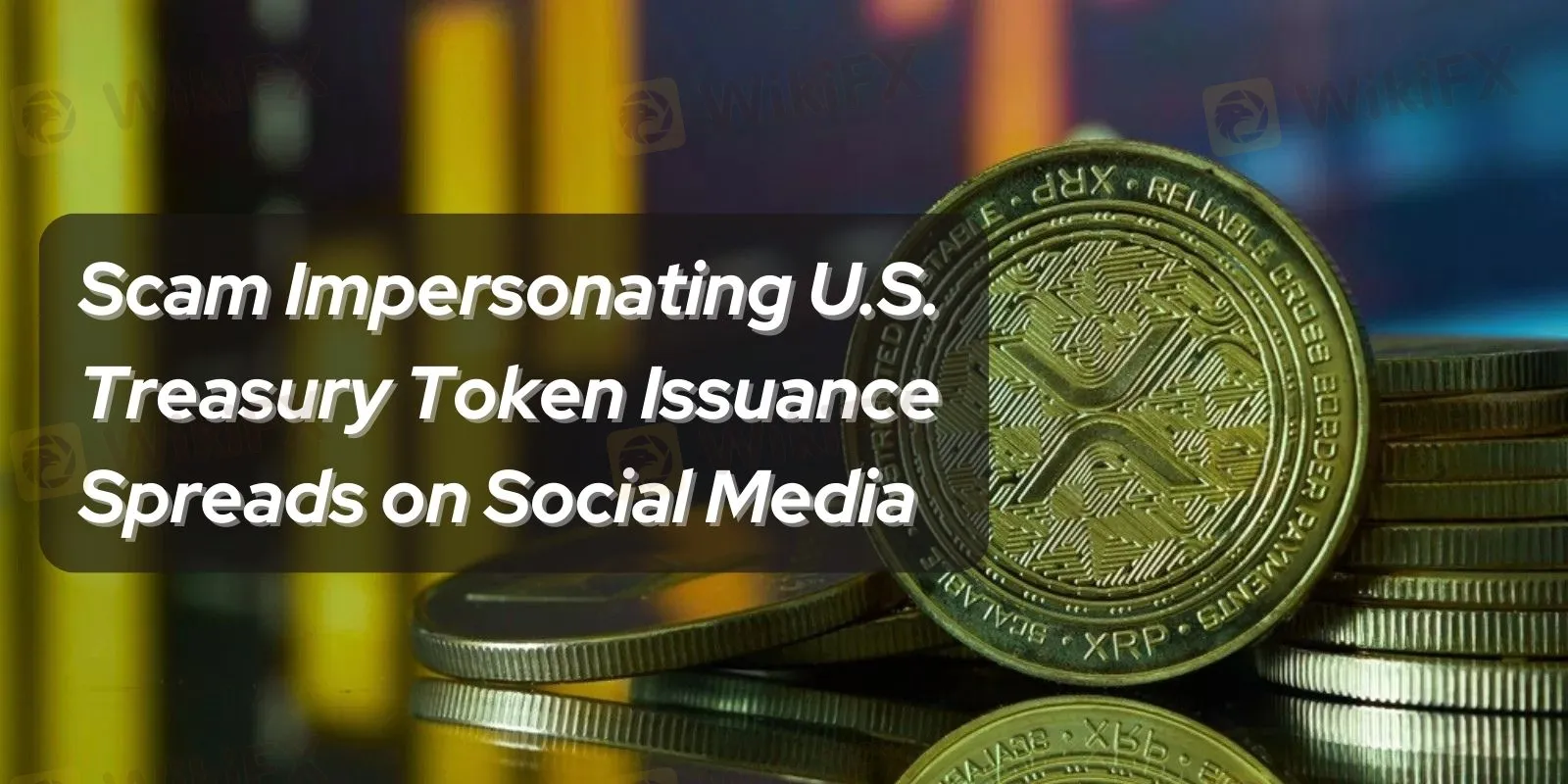简体中文
繁體中文
English
Pусский
日本語
ภาษาไทย
Tiếng Việt
Bahasa Indonesia
Español
हिन्दी
Filippiiniläinen
Français
Deutsch
Português
Türkçe
한국어
العربية
Scam Impersonating U.S. Treasury Token Issuance Spreads on Social Media
Abstract:A social media scam falsely claimed the US Treasury created an XRP wallet, exploiting misinformation and targeting crypto newcomers with fabricated credibility.

In January 2025, a new social media scam surfaced, falsely claiming that the US Treasury had created an XRP wallet. Despite obvious red flags, this hoax spread rapidly across platforms like X (formerly Twitter), fueled by major accounts amplifying the misinformation. The incident underscores the vulnerability of the crypto space to scams, particularly targeting inexperienced investors.
Unpacking the XRP Wallet Scam
The scam originated from accounts allegedly based in the Philippines, where individuals impersonated the US Treasury and claimed the creation of an XRP wallet. The wallet supposedly interacted with major financial institutions like Bank of America and JPMorgan, lending an air of credibility to the hoax. However, on-chain analysis quickly revealed that the wallet was neither affiliated with the US Treasury nor based in the United States.
The timing of the scam played into existing narratives. Since former President Trump‘s endorsement of a US Bitcoin Reserve and several states pursuing their own Bitcoin reserves, some speculated that the Treasury might also explore cryptocurrency investments. Coupled with XRP’s recent price surge, these factors made the hoax appear plausible to some in the community.
Targeting Vulnerable Investors
This scam highlighted a critical issue: the susceptibility of crypto newcomers to misinformation. Reports suggest that nearly half of TRUMP meme coin holders are first-time crypto investors. Without prior experience or knowledge, many fall prey to scams that appear credible due to verified accounts or trending narratives.
Zach Rynes, a Chainlink Community Liaison, pointed out that trained eyes could easily identify the red flags. However, he noted the difficulty of combating such hoaxes in a decentralized, fast-paced environment. The scam underscores the need for robust education and vigilance within the crypto community.
Recognizing the Nature of Scams
The XRP wallet scam underscores the importance of understanding the common characteristics of crypto scams. These schemes often use fabricated connections to reputable institutions, like the US Treasury in this case, to mislead and exploit trust. Identifying such red flags and cross-checking information with official sources are crucial steps in avoiding deception.
Disclaimer:
The views in this article only represent the author's personal views, and do not constitute investment advice on this platform. This platform does not guarantee the accuracy, completeness and timeliness of the information in the article, and will not be liable for any loss caused by the use of or reliance on the information in the article.
Read more

The Dark Side of Trading Gurus: Are You Following a Fraud?
Across social media, YouTube, and countless online forums, self-proclaimed trading ‘gurus’ promise to share their winning strategies for a price. These so-called experts claim to have cracked the code, offering courses, investment tips, and mentorship schemes that guarantee success. However, in reality, many of them are little more than sophisticated scammers, preying on the financial aspirations of their followers.

Authorities Alert: MAS Impersonation Scam Hits Singapore
MAS scam alert: Scammers impersonate officials, causing $614K losses in Singapore since March 2025. Learn how to spot and avoid this impersonation scam.

Billboard Warns of Crypto Scams Using Its Name – Stay Alert!
Billboard warns against fake crypto scams using its brand. Learn how to spot fraud and protect yourself from fake promotions.

Rising WhatsApp Scams Highlight Need for Stronger User Protections
UK consumers lose £2,437 on average to WhatsApp scams. Revolut demands stricter verification and AI monitoring to combat rising fraud on Meta platforms.
WikiFX Broker
Latest News
Interactive Brokers Launches Forecast Contracts in Canada for Market Predictions
Authorities Alert: MAS Impersonation Scam Hits Singapore
INFINOX Partners with Acelerador Racing for Porsche Cup Brazil 2025
The Impact of Interest Rate Decisions on the Forex Market
Billboard Warns of Crypto Scams Using Its Name – Stay Alert!
STARTRADER Spreads Kindness Through Ramadan Campaign
How a Housewife Lost RM288,235 in a Facebook Investment Scam
Rising WhatsApp Scams Highlight Need for Stronger User Protections
A Trader’s Worst Mistake: Overlooking Broker Reviews Could Cost You Everything
The Daily Habits of a Profitable Trader
Currency Calculator







